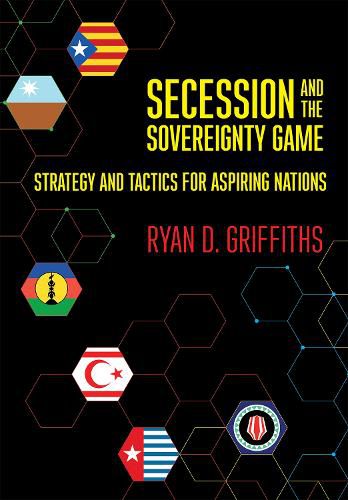Readings Newsletter
Become a Readings Member to make your shopping experience even easier.
Sign in or sign up for free!
You’re not far away from qualifying for FREE standard shipping within Australia
You’ve qualified for FREE standard shipping within Australia
The cart is loading…






Secession and the Sovereignty Game offers a comprehensive strategic theory for how secessionist movements attempt to win independence. Combining original data analysis, fieldwork, interviews with secessionist leaders, and case studies on Catalonia, the Murrawarri Republic, West Papua, Bougainville, New Caledonia, and Northern Cyprus, Ryan D. Griffiths shows how the rules and informal practices of sovereign recognition create a strategic playing field between existing states and aspiring nations that he terms the sovereignty game.
To win sovereign statehood, all secessionist movements have to maneuver on the same strategic playing field while varying their tactics according to local conditions. To obtain recognition, secessionist movements use tactics of electoral capture, nonviolent civil resistance, and violence. To persuade the home state and the international community, they appeal to normative arguments regarding earned sovereignty, decolonization, the right to choose, inherent sovereignty, and human rights.
The pursuit of independence can be enormously disruptive and is quite often violent. By advancing a theory that explains how sovereign recognition has succeeded in the past and is working in the present, and by anticipating the practices of future secessionist movements, Secession and the Sovereignty Game also prescribes solutions that could make the sovereignty game less conflictual.
$9.00 standard shipping within Australia
FREE standard shipping within Australia for orders over $100.00
Express & International shipping calculated at checkout
Secession and the Sovereignty Game offers a comprehensive strategic theory for how secessionist movements attempt to win independence. Combining original data analysis, fieldwork, interviews with secessionist leaders, and case studies on Catalonia, the Murrawarri Republic, West Papua, Bougainville, New Caledonia, and Northern Cyprus, Ryan D. Griffiths shows how the rules and informal practices of sovereign recognition create a strategic playing field between existing states and aspiring nations that he terms the sovereignty game.
To win sovereign statehood, all secessionist movements have to maneuver on the same strategic playing field while varying their tactics according to local conditions. To obtain recognition, secessionist movements use tactics of electoral capture, nonviolent civil resistance, and violence. To persuade the home state and the international community, they appeal to normative arguments regarding earned sovereignty, decolonization, the right to choose, inherent sovereignty, and human rights.
The pursuit of independence can be enormously disruptive and is quite often violent. By advancing a theory that explains how sovereign recognition has succeeded in the past and is working in the present, and by anticipating the practices of future secessionist movements, Secession and the Sovereignty Game also prescribes solutions that could make the sovereignty game less conflictual.